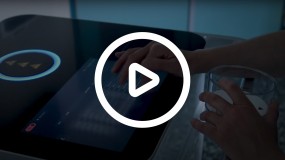The first PET-CT specimen imager for the OR
In surgical oncology, such as breast conserving surgery, rapid assessment of the excised specimen is of utmost importance. You want to be confident that your surgery reached its goal of resecting the target lesion, so that your patients recovery can be promoted.
AURA 10 has made molecular imaging available in the OR for the first time. As a result, surgeons and imaging specialists have never been able to perform specimen imaging with so much confidence. Ultimately, your patients will be the ones who benefit.
Benefits of intra-operative specimen imaging
Transforming surgical oncology
With the AURA 10 PET-CT Imager, XEOS is transforming mobile specimen radiography, allowing you to operate with more clarity. AURA 10 brings increased precision to the OR by integrating PET molecular imaging and 3D tomography acquisition capabilities into a compact and ergonomic cart-based system. This makes it possible for the first time to obtain reference image quality in your procedure room within minutes after excision.
Key features of AURA 10
More clarity for more patients
The AURA 10 PET-CT Imager offers surgical oncologists the opportunity to assess resected specimens intraoperatively with more clarity and for an increasing number of applications and patients. Surgeons can now operate with more confidence, but also speed up procedure time, reduce anesthesia time, and improve the chances of recovery.
The AURA 10 can be used for a diverse range of applications, including:
XEOS AURA 10 existing users
Click on the tabs below to find out more about current customers and how they are using the AURA 10 in their hospitals.
Documents
Sorry, there are no documents available for this product.







